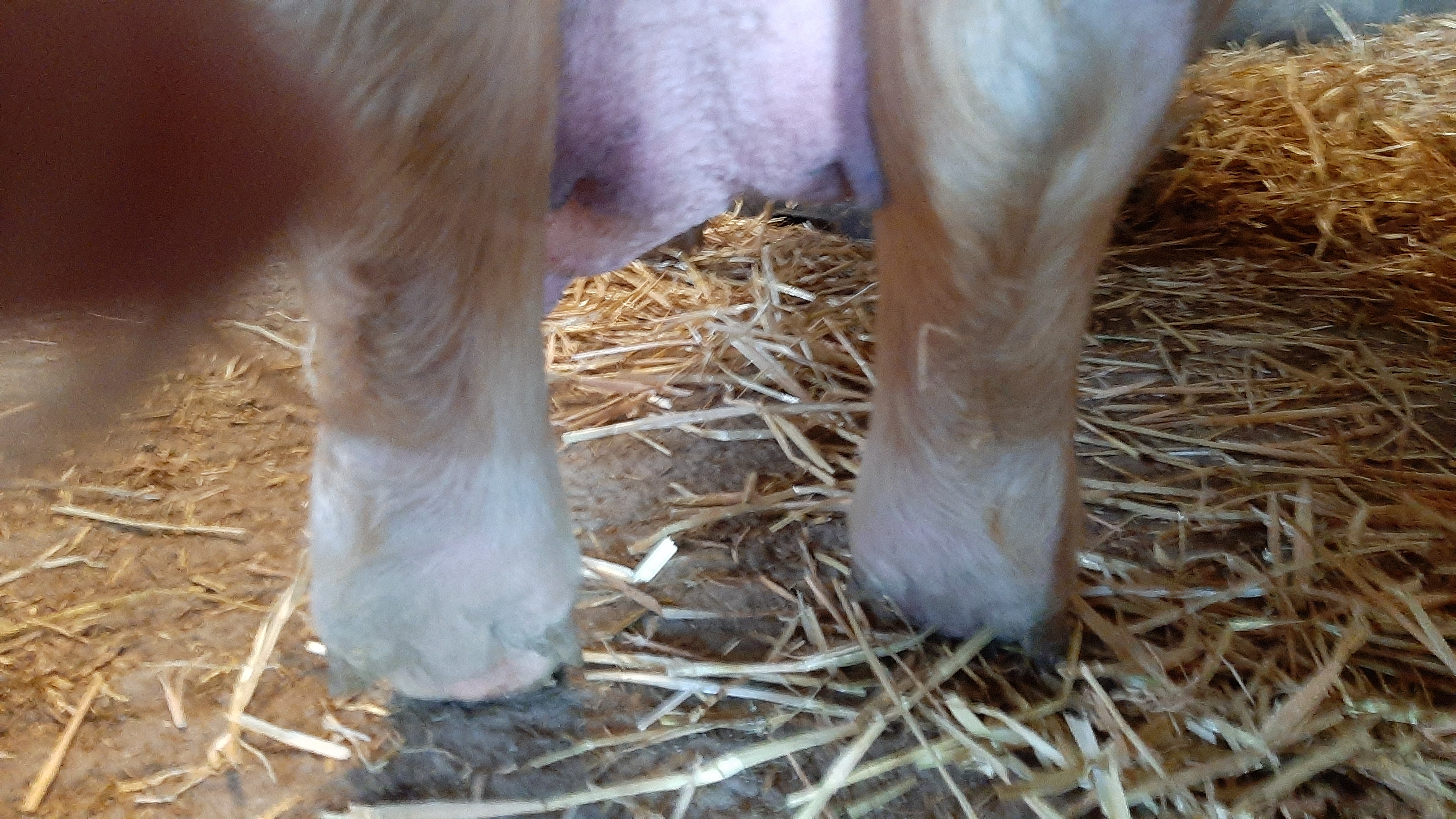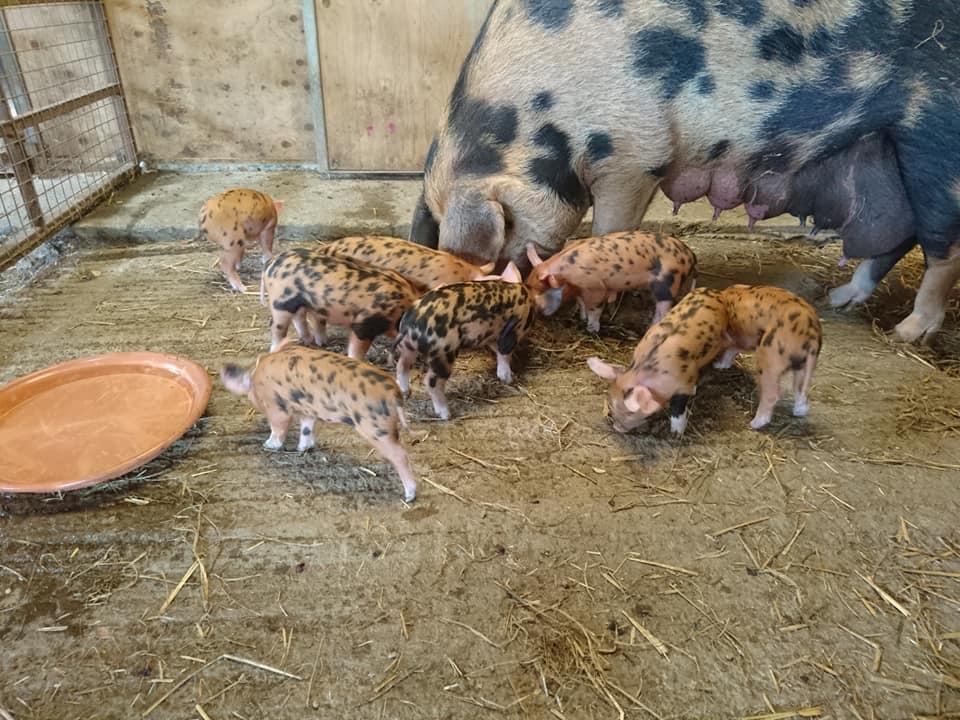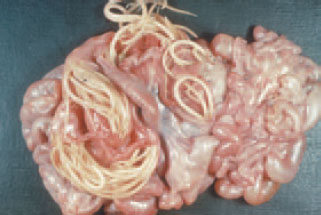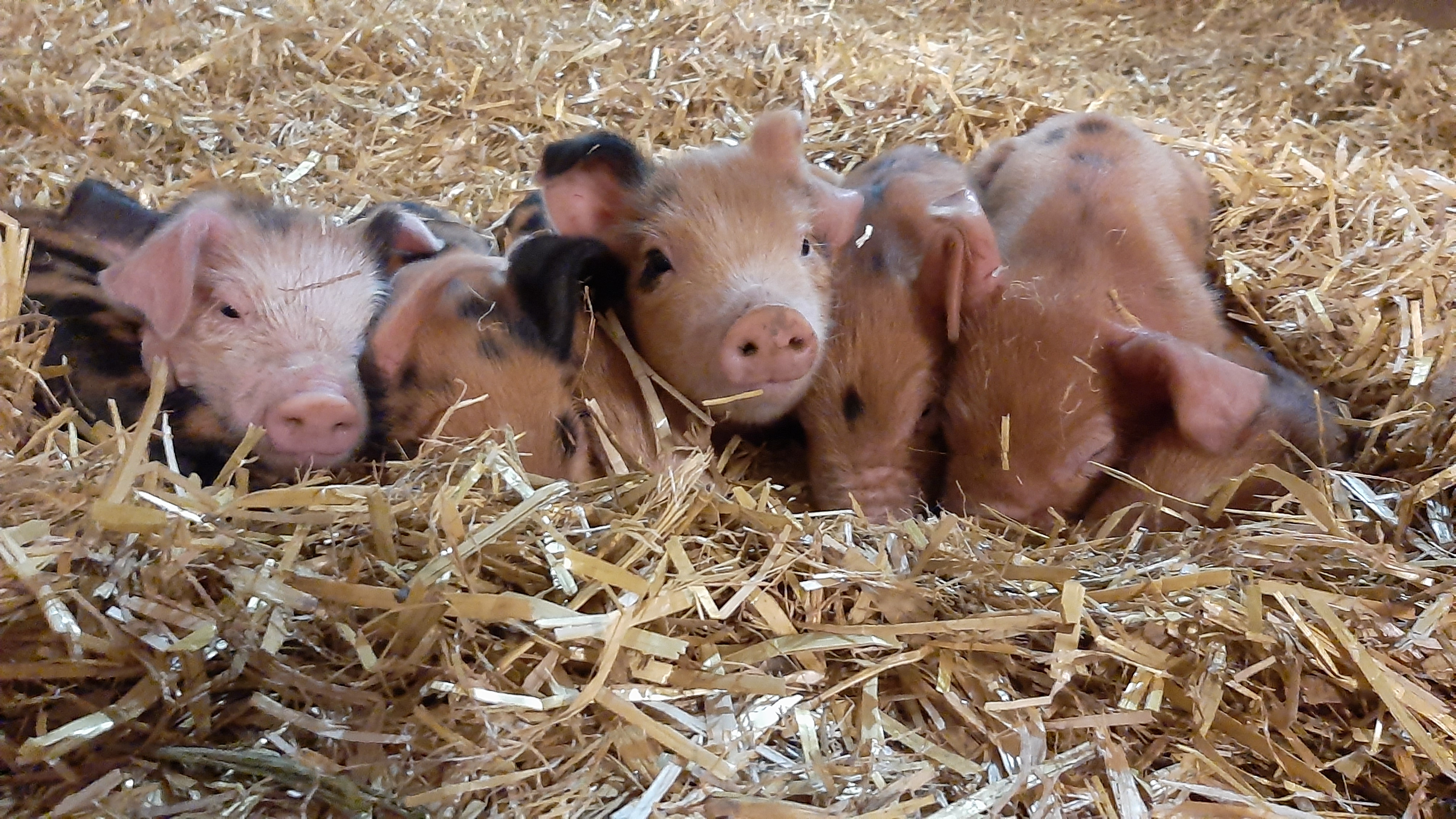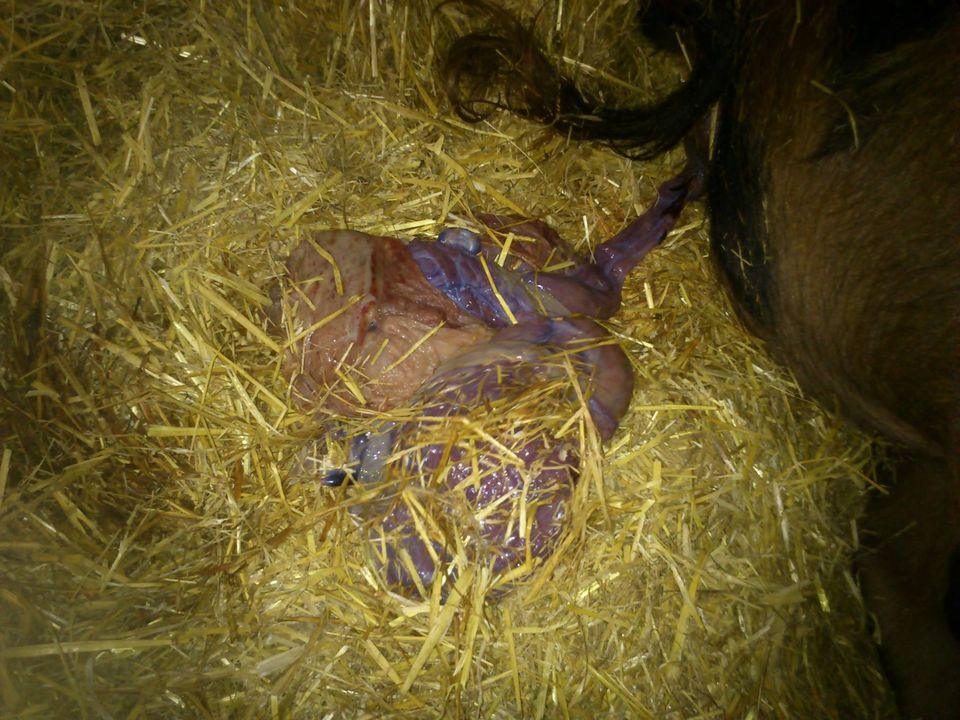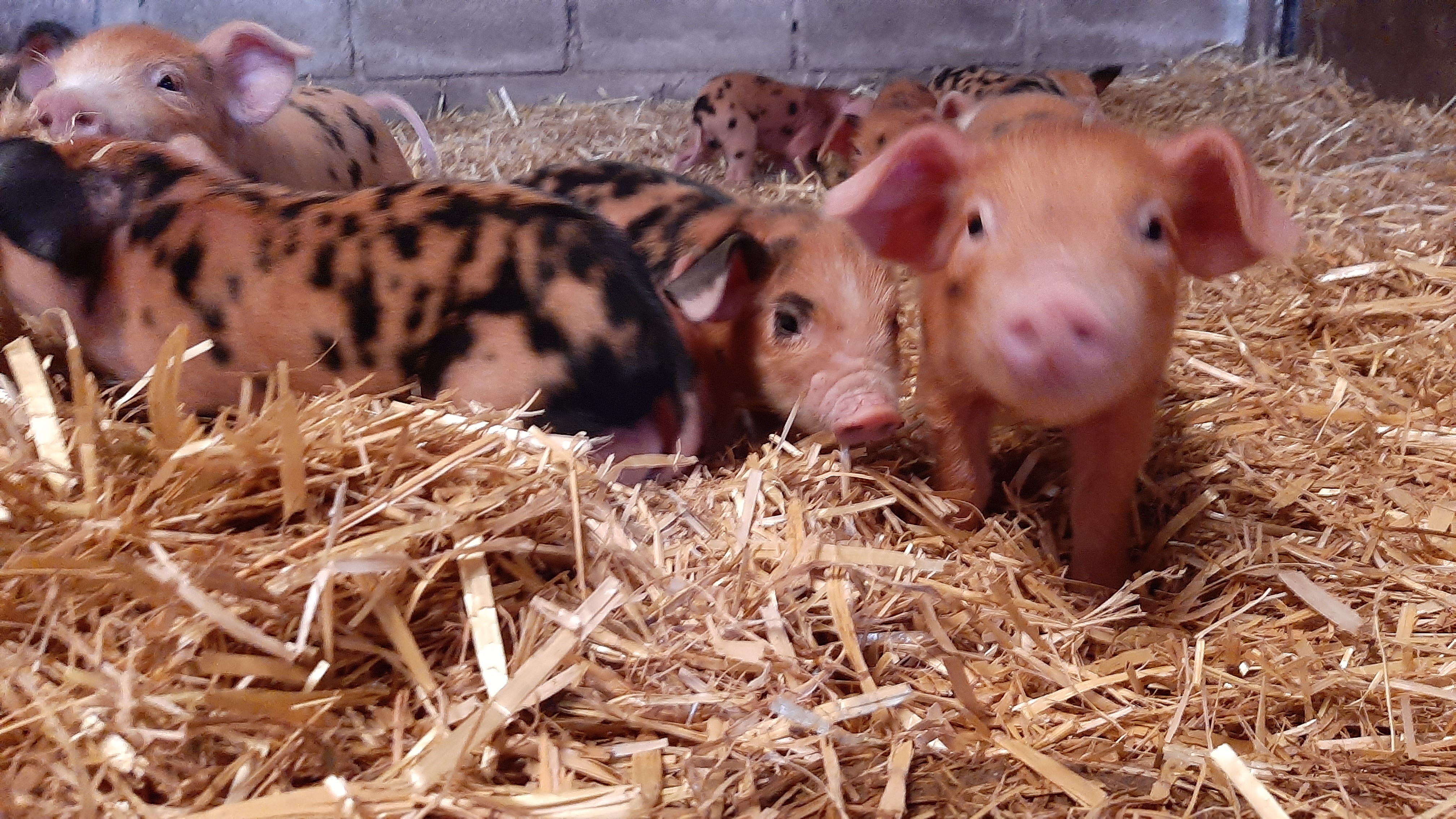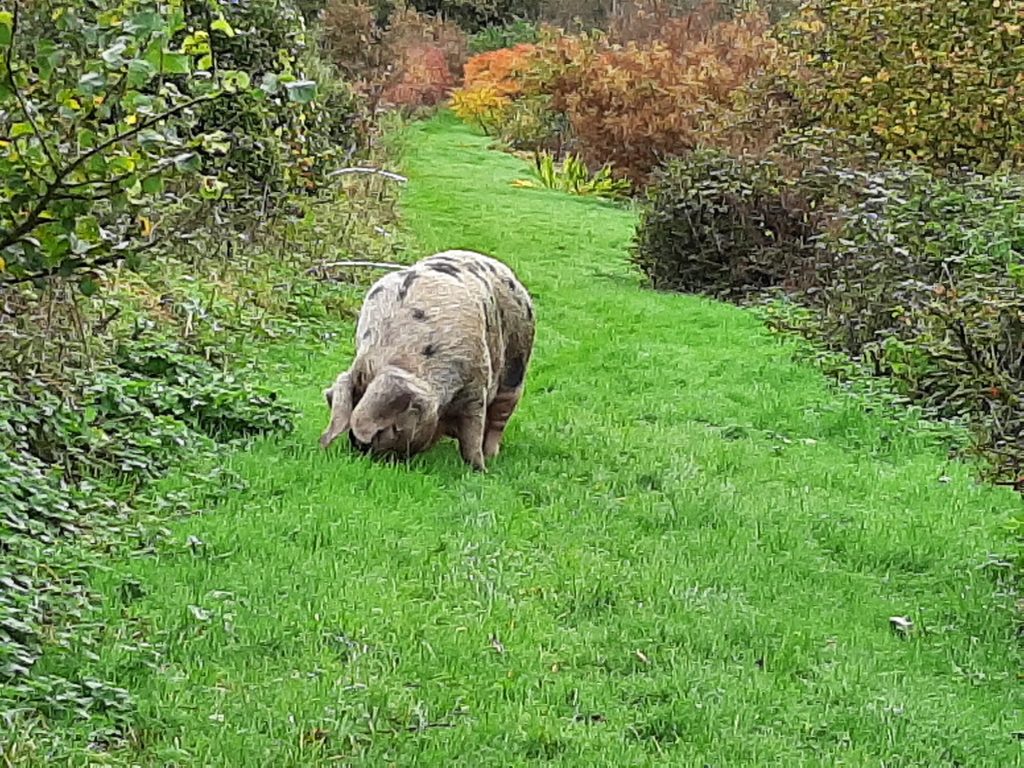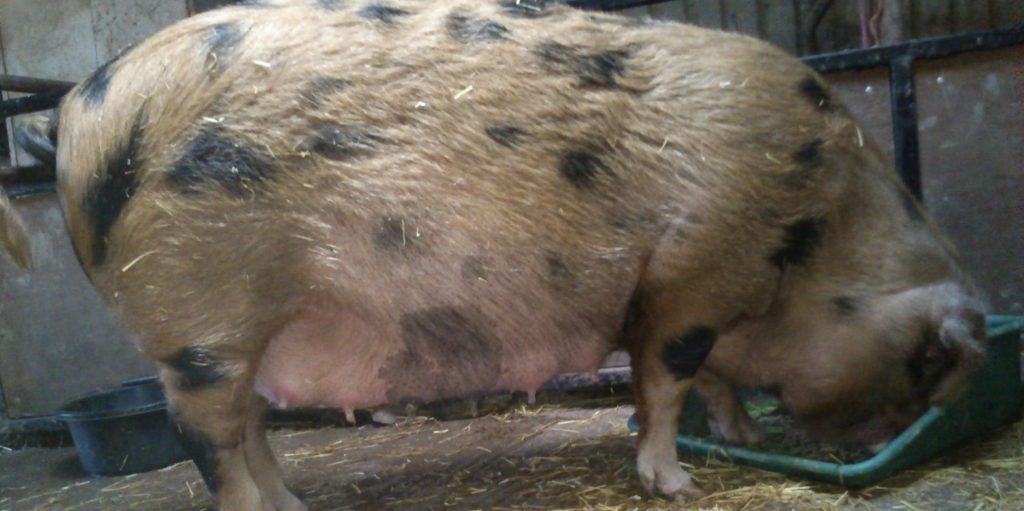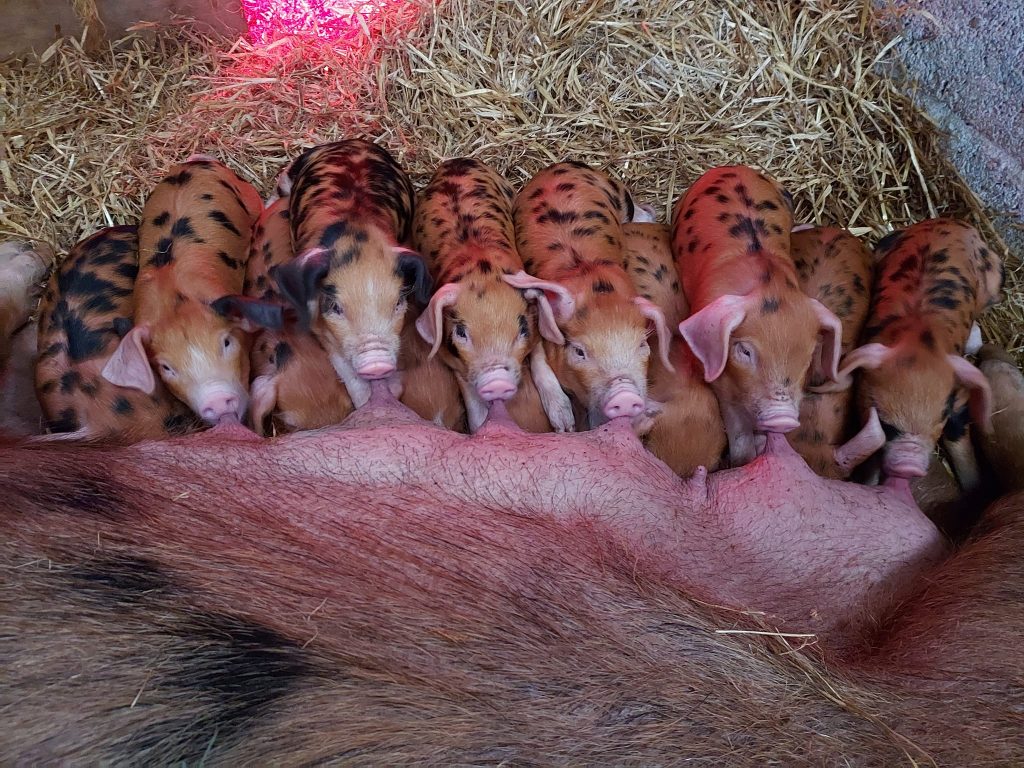
Colostrum
Providing vitamins, nutrients and warmth. Piglets will feed regularly every 20 minutes for the first 24 hours and then every half hour in the first couple of days to an hour after a week. The composition of colostrum at farrowing is:
- 25% – 30% total solids
- 15% – 19% protein
- 5% – 7% fat
- 2% – 3% lactose
- 0.63% percent ash
